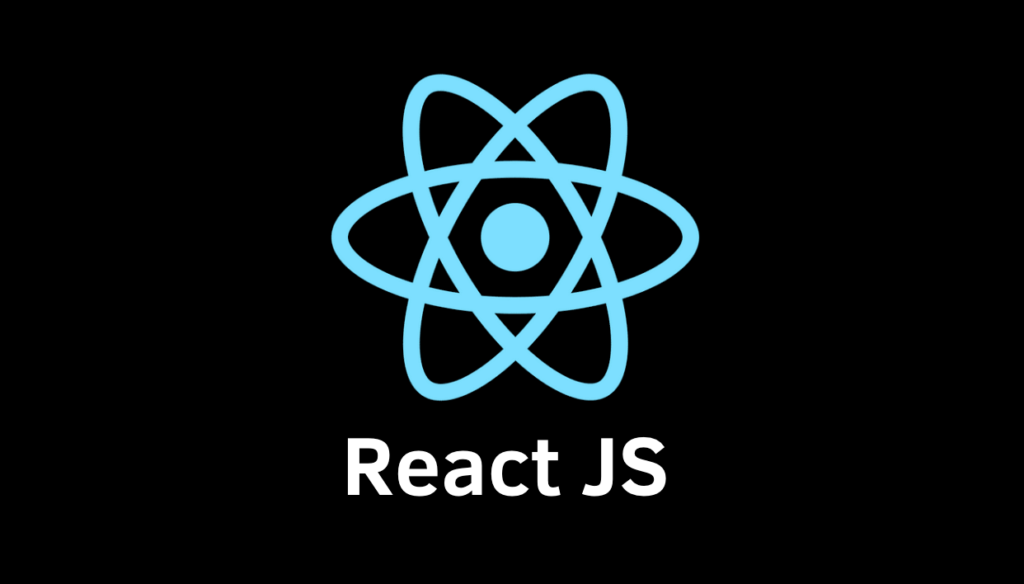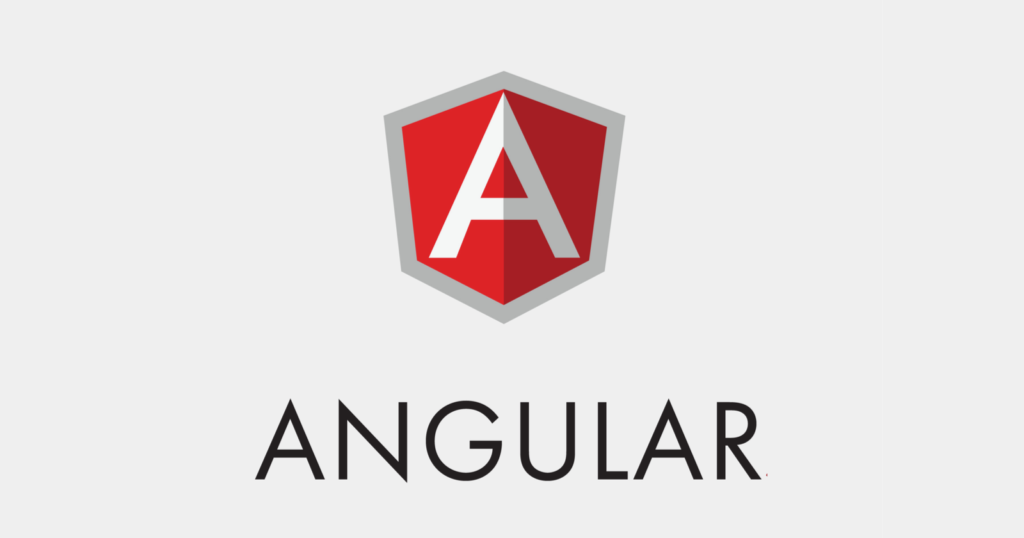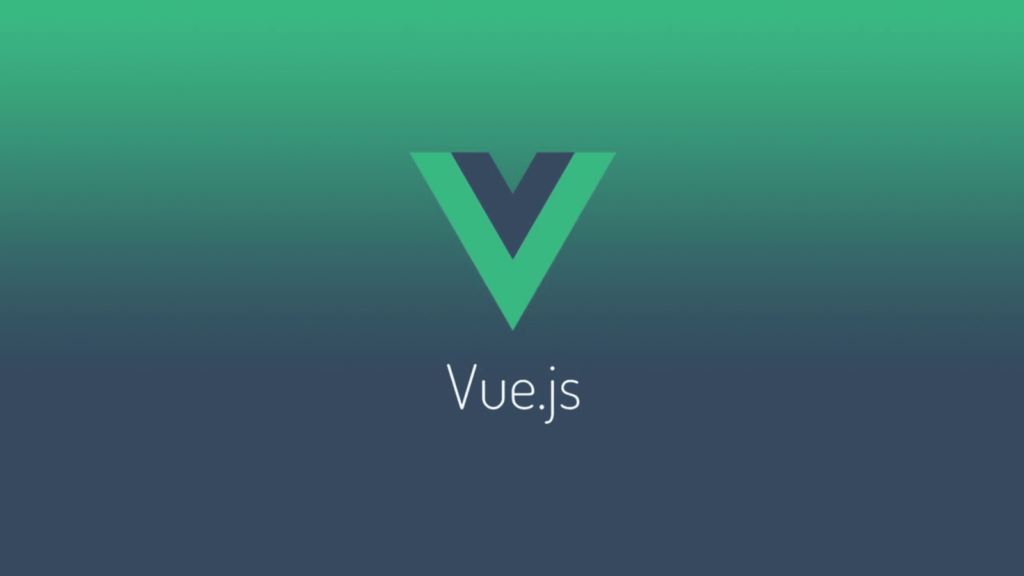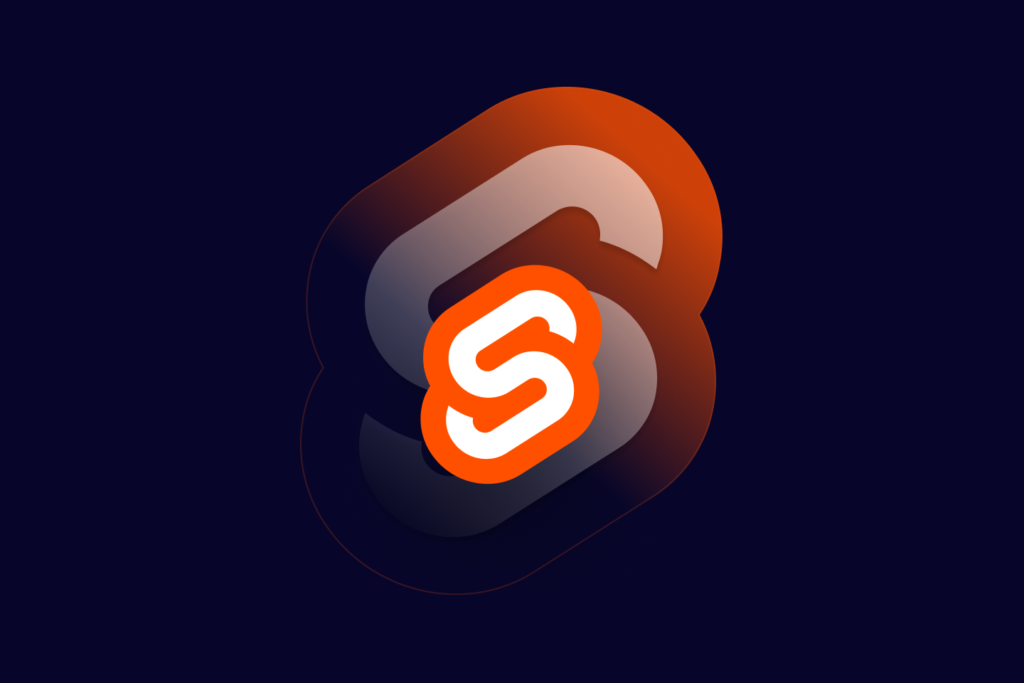
Frontend Frameworks to Look for Your Upcoming Web Project
The world of JavaScript has a booming environment with hundreds of tools, frontend frameworks, and libraries. Sure, having a plethora of options feels great, but with that comes a lot of confusion. It actually is a double-edged knife.
While developers get the opportunity to experiment and create, they are still arguing about which one is the finest in the bunch of frontend frameworks. And why not? User experience is one of the most crucial aspects as it puts across your brand’s way of communication to customers. No matter how rich and complex the background operations are, what your users see and feel on the website/app has to be flawless.
Take Airbnb, Netflix, or Duolingo, for example; all these websites have excellent interfaces that we absolutely love to interact with. Thanks to all the frameworks operating under the hood. But with the increasing number of cutting-edge technologies and customer demands, you must keep pushing the standard in terms of functionality and usability. And here lies the real concern.
Every once in a while, we come across such clients who have their heads messed up in choosing the best frontend framework for their business needs. So, we decided to put our thoughts together in this article and curate a list of the finest frameworks for frontend development in 2022.
Enjoy your reading!
Most Popular Frontend Frameworks in Recent Years
There has been a steady growth in the popularity of JavaScript frameworks over the last five years. According to Google Trends, the demand has significantly dropped by the end of every year but bounced back in January. As users have searched for React.js the most, it has held the top position. Angular comes right after it, followed by Vue.js in the third position.
To validate the Google reports, we went to check the NPM Trends for the downloads of frontend technologies. As you can see, the popularity drops are visible here as well. The most downloaded framework is React.js, followed by jQuery. The third place goes to Vue.js.
Now, if we look at the State of JS stats, the results are quite compelling. As always, React.js continues to be the most trustworthy framework among developers. Only in 2018, Vue.js shared the first position with it. Surprisingly, the popularity of Angular has been decreasing in recent times.
Finally, we looked into the Statista report on the most used web frameworks among developers in 2021. React.js, as usual, is on the top, with jQuery and Express falling right behind. To be honest, nothing stands that surprising!
Did these reports help us come to a final verdict? Yes! The popularity of top frontend frameworks keeps changing. However, some of the frameworks maintaining their prominence over the past five years are React.js, Vue.js, Angular, and jQuery.
Top 5 Frontend Frameworks in 2022
Based on the analysis and trends of the previous years, we want to share my predictions with you about the best frontend frameworks to use in 2022. Stay with us if you want to know more about the list of frameworks, as we are going to discuss each of them in detail.
1. React (Facebook’s Brainchild)

Every framework is unique in its own way, so is ReactJs. This open-source framework introduced a lot of new approaches to the frontend development world, including component-based architecture, which Angular adopted later on. It has over 25 million users, huge community support, and 178k stars on GitHub.
It all started when Facebook was emerging in the market and needed to go through a lot of improvements and additions. React made it exceptionally easy for them to manage and fix the coding part. Now, approx. 2 million websites are currently running with the help of React, and 80% of professional developers have a great experience using it. So, if you want to build a steady platform to manage high traffic, hire ReactJs developers to build the frontend.
Advantages of React
- Reusable components for seamless collaboration and reusage in other parts of the app.
- Virtual DOM for high-performative and fast-rendering apps.
- Top-notch productivity and maintenance through regular updates by Facebook.
- You can easily combine it with other JavaScript libraries and migrate between multiple platforms.
- Reach Developer Tools as a browser extension, making it easy to observe components in detail and improve them.
- React has a shorter learning curve, with Hooks allowing writing components without classes. Hence, it’s an ideal framework for beginners.
Disadvantages of React
- The concept of JSX syntax might be difficult to understand in the beginning.
- As React components frequently go through many updates, it becomes incredibly hard to document them properly.
- You can only build the UI of your app with React.
When Should You Use React?
If you have limited time and want to build a single-page/cross-platform app with a dynamic interface, React.js is a charismatic frontend maker. As it has a virtual DOM, you can rely on this framework for complex projects consisting of a number of blocks (such as buttons, navigation accordion menu, navigation panels). And if you use React with other libraries like Redux, it becomes a lot more efficient.
When Should You Not Use React?
If your developers don’t have hands-on experience with pure JavaScript, React is not a good choice for your project. Also, JSX could be an entry-level hurdle for you if you don’t want to invest much time in learning it.
Real-Life Examples of React Projects
React is the first choice among top frontend frameworks for many industry leaders. Some of the popular websites for which React is running under the hood are – Netflix, Facebook, Salesforce, Instagram, Pinterest, Asana, BBC, UberEats, Reddit, etc.
2. Angular (A Google Invention)

Angular wins its spots in this 2022 list as an open-source frontend framework based on TypeScript. Although Google engineers released its initial version back in 2010, they deployed the latest version (Angular 2+) in 2016 with the goal to improve technology and mitigate the challenges of traditional frameworks.
Were they successful? Well, if we look at the recognition and popularity of Angular, we can say that it came to the market as a revolutionary technology and outweighed its older competitor, jQuery. Right now, Angular has 84.3k stars on GitHub, and 1,141,572 live websites are running with the help of it. It’s an all-encompassing solution that empowers developers to focus on their tasks instead of searching for tools and libraries here and there.
Advantages of Angular
- The two-way data binding feature enables robust data synchronization between the data model layer and the view layer of the Model-View-Whatever Architecture.
- The primary language for Angular is TypeScript which you can transform into JavaScript and make the coding process a lot easier for its refactoring services and optimized navigation.
- The Material Design interface process becomes efficient with Angular Material – the maintenance team regularly updates its framework with the latest material design components. Don’t forget to check the latest AngularJs frameworks.
- Angular has built-in Directives that enable developers to experiment with the DOM and build dynamic content with HTML.
- Programmers can decouple interdependent code components through the dependency injection feature of Angular and reuse them as per their requirements.
Disadvantages of Angular
- Developers find it hard to manage Angular components despite its web-based structure; for example, you need to maintain multiple files for a single component and its lifecycle interfaces.
- Angular and AngularJS are significantly different. Hence, transferring legacy systems can be a challenging task.
- The CLI documentation is not efficiently constructed, and developers need much time to figure out more about it on GitHub or other platforms.
When Should You Use Angular?
If you need to develop dynamic and enterprise-level web apps, Angular will be worth a shot. We would recommend this open-source framework to experienced developers as it facilitates large-scale projects.
When Should You Not Use Angular?
As mentioned above, Angular is an outright solution with complete frontend technologies. So, if you are planning to create a small-scale web app, Angular is not the best bet for you as you will not utilize its benefits to the fullest. It does not make sense to go for complications and waste your time and talent.
Moreover, if you are aiming for SEO optimization, look for other alternatives as Angular is not very SEO-friendly.
Real-Life Examples of Angular Projects
Angular is the fundamental technology for the majority of Google services. A few other leading brands using this framework are – Forbes, Upwork, PayPal, Weather, JetBlue, Deutsche Bank, Freelancer, IBM, Samsung, etc. So, in case you are thinking about building the next PayPal, hire dedicated AngularJs programmers.
3. Vue.js (The Perfect Combination)

Developers have always found Vue as a combination of React and Angular. The best features of the existing frontend frameworks have been deployed to build a simple and straightforward framework in 2014. But it’s worth mentioning that Vue does not have a complex environment like Angular and is relatively smaller, making it easy to learn and use.
In terms of functionality, developers absolutely love this framework for its seamless accessibility to features. It offers two-way reactive data-binding without demanding any additional libraries. Currently, 1,704,937 live websites are using Vue, and it’s in the fifth position on the list of best 10k sites in the JS library category. In general, Vue.js is one of today’s most popular libraries with steady growth.
P.S: Vue already has 190k stars on GitHub. You better not doubt its popularity!
Advantages of Vue.js
- Developers adore Vue.js for its simplicity and clarity. You can learn as well as use it in a brief period of time. Its API surface area is also quite small.
- Vue.js has a logical structure that allows code reusability and simple integration. UI experts can easily build flexible components and reuse them as they want.
- As one of the top frontend frameworks, it offers extensive, well-structured, and up-to-the-minute documentation.
- Vue does not need any additional library, as we said earlier. It has its own extensions of web development tools, enabling you to change multiple components as you need manually.
Disadvantages of Vue.js
- Vue’s great flexibility comes with a price as it results in code irregularities. We have come across such developers who brought up the point that contributions from all web frontend engineers can lead to irregular code.
- China has a huge demand for Vue. Hence, a significant part of its documentation is in Chinese. Such a language barrier has created a hurdle for developers to access the files.
When Should You Use Vue.js?
If you want to provide an engaging digital service through a highly flexible app, there’s no better choice than this JavaScript framework. Your developers can literally create everything from the ground up and design robust and user-friendly interfaces.
Also, if you are executing a small project for a single-page app, hire skilled vue.js developers for the best results.
When Should You Not Use Vue.js?
Lately, developers have been facing some problems with the stability of Vue components. This has become a significant drawback for this frontend framework. Also, a lack of supportive community is not the best deal if you need some help with complexities.
Real-Life Examples of Vue.js Projects
Here are some amazing landing pages and websites you might have seen but did not know were developed with Vue.js – 9gag, Behance, Chess, Nintendo, Gitlab, Wizzair, Laracasts, Alibaba, Xiaomi, etc.
4. Svelte (Not a Typical Framework)

Svelte emerged as a progressive new approach to the world of front-end technologies. Whereas market-leading frameworks like Vue and React do most of their task on browsers, Svelte has repositioned that work into a compile step happening while building your app. In simple words, this framework has no virtual DOM diffing and surgically updates it when any changes occur in the app state by writing code.
Recently, Svelte has gained immense recognition as the most loved web framework with the most satisfied developers in 2021 Stack Overflow and State of JS surveys. There are 22.088 websites around the world that are Svelte customers, and at least 15% of frontend developers have had a positive experience using it. As a lightweight frontend framework, it enables faster and lesser coding for developers.
Advantages of Svelte
- Svelte offers modularity to segregate different components and separate the view, logic, and template. This allows us to access different variables right from the beginning as the entire development navigation becomes easier.
- Although the primary language of this framework is TypeScript/JavaScript, it has language extensions to CSS, HTML, and JS that facilitate the web development process and stand out from other technologies.
- It allows terse code with bare minimum wasted characters. As a compiler, it offers great output flexibility as per context-based needs. Runtime-only frameworks do not have this benefit.
- Apart from speed, you can enjoy a great development experience with Svelte.
Disadvantages of Svelte
- The compiler architecture of Svelte can sometimes move complexity from the source code and runtime to tools and build time. Hence, growing build complexity is a non-negligible issue for developers.
- The Svelte library ecosystem is still young, and the community needs to grow a lot as well in order to offer support to fellow developers.
- This framework is its own language; meaning, you developers need to adobe a new language that demands more time and effort.
When Should You Use Svelte?
Svelte is arguably the best frontend framework for small app projects. It does not need DOM, uses uncomplicated and straightforward syntax, and ensures little workload on the browser. Hence, it is ideal for newbie developers.
When Should You Not Use Svelte?
If you’re on a big project, it’s better not to use this framework as Svelte does not have a stable community and a sufficient pool of plugins. Especially if you are planning to build your own infrastructures, such as router or state management, it would be an important stepping stone.
Real-Life Examples of Svelte Projects
If you have decided to create a Svelte website, check out these projects for reference – SEMrush, GoDaddy, Razorpay, The New York Times, Phillips, 1Password, Cashfree, Absolute Web, BlueHive, Chess, HealthTree, Rakuten, and more.
5. jQuery (The Old Stager of Frameworks)

jQuery is a veteran in the world of open-source JS frontend frameworks released in 2006. Although it’s one of the earliest frameworks, its relevance to this day clearly makes it stand out from its competitors. Apart from offering easy usability and simplicity, jQuery also spares you from the task of writing extensive code in JavaScript.
jQuery is primarily a library, but you can use it to manipulate HTML DOM and CSS as well as to improve the interactivity and functionality of a website. Even if you’re struggling with the development process, the big and experienced jQuery community is there to help you.
There are at least 69,193,395 running websites on the jQuery bandwagon. The ecosystem and API of this frontend technology help developers a lot to achieve. They get to use less hand-rolled code that improves productivity and maintains code quality and coding standards.
Advantages of jQuery
- With jQuery, you do not need to learn a new syntax for JavaScript enhancement.
- It helps in keeping the code readable, reusable, clean, and simple.
- In terms of handiness, this is the best front-end framework compared to standard JS libraries.
- jQuery eliminates the need for DOM scripting library calls and writing complex and repetitive loops.
- It has a robust open-source community that provides a plethora of tools for faster web/app development.
- If you are a beginner, jQuery can offer you extensive tutorials and documentation to have in-depth knowledge.
- You can seamlessly build templates with Ajax support.
Disadvantages of jQuery
- jQuery is a single JavaScript file containing all the features. Hence, you have to import the huge library at once.
- The abstraction of jQuery hides the complicated JavaScript parts, making it actually difficult to learn the language.
- The DOM APIs of this framework have become outdated now. You can do the same work with modern browsers, even quicker than jQuery.
When Should You Use jQuery?
jQuery is one of the top frontend frameworks when it comes to building desktop-based JavaScript apps. With its simplified approach to efficient content, cross-browser support, and optimized code logic, you can provide flawless searchability and interactivity even in 2022.
When Should You Not Use jQuery?
jQuery does not have a data layer that other popular frameworks have. Therefore, you must have access to DOM and manipulate it directly, making the whole development process more complex. So, if you are planning to build a website with a rich UI, opting for this framework would not be a wise decision unless you want slow performance and bloated code.
Real-Life Examples of jQuery Projects
Microsoft, Twitter, Fiverr, Trello, Gitlab, Uber, SurveyMonkey, Pandora, Kickstarter, WordPress, GreeksforGeeks – these are some of the well-reputed brands that use jQuery for their web development projects.
What Factors Should You Consider for Choosing the Best Front End Framework?
We have curated the list of these five best frameworks not only by considering the latest enterprise web development trends and stats but also from our own development experience.
Out of the five options, React and Angular are the most popular frameworks right now. If you want to build an app with ample UIs, React would be the best choice. On the other hand, Angular is the most suitable framework if you need to create the frontend part of your app from scratch.
However, watch out for Vue.js as its fanbase is continuously increasing and might give a tough competition to the big two. This has given rise to the Angular vs. React vs. Vue argument among developers.
Similarly, Svelte and jQuery are the other two progressive frontend technologies that are crying considerable weight for developers and project managers.
With all such options, deciding on the right framework is pretty confusing, right? Our suggestion would be to consider some more aspects that might help you make the right decision, including:
- Maturity and popularity of the technology
- Update consistency
- Community support
- Project complexity and scope
- Framework flexibility
- Development costs and time
- Availability of developers
These smallest yet significant details can lead to your final decision. Keep in mind that you have to be really careful with understanding and planning your business needs and aligning them with the suited tech stack. Such a positive approach can make a huge difference in choosing the right UI framework for your project.
To Conclude
Here are our final words: Based on our experience in the development industry, we have mapped out our own interests and opinions, as everyone else has. But what we, as well as other tech experts, feel and think should not really trouble you. If you are still in a dilemma, look at case studies and statistics of these frontend technologies.
Hence, if we were in your shoes and had to choose the right framework for my project, we would look at my competitors, present industry leaders, and reports.
If you have a specific target, such as implementing a specific feature in your website, then check out the tech stack of the companies that have already worked on it. Try to find out what library or framework they are utilizing. We bet you will find either one option or too many of them! So, make your decision and start learning.
And if anything does not work here, we are here to help you. As a leading front-end development company, Trident Technolabs has a clan of most experienced and skillful developers who can understand your business needs and recommend the right framework.
Let’s team up and build a leading-edge app with your desired frontend framework. That would surely be a way to scale up your business!


Pingback: Web Application Development – The Ultimate Guide You Need To Know